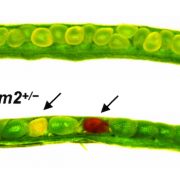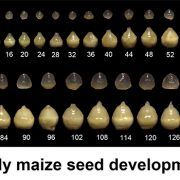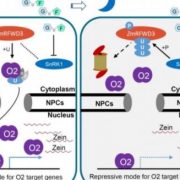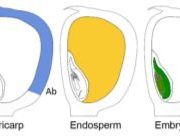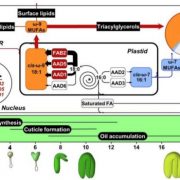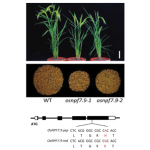LEC1 acts as a molecular signal between the endosperm and embryo to initiate and regulate embryo maturation (Nature Comms)
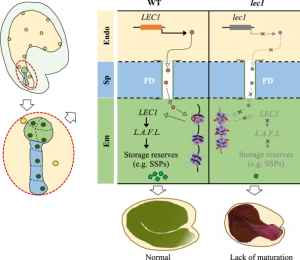 In most angiosperms, the seed is an outcome of a double fertilization process that initiates the development of the embryo and endosperm. The endosperm plays an essential role in nourishing the developing embryo by ensuring adequate maternal nutrient transfer. However, we are far from knowing the factors that coordinate the developing embryo and endosperm. LEAFY COTYLEDON 1 (LEC1) is expressed in both embryo and endosperm and plays a central role in most aspects of seed maturation. Song et al. hypothesized that the endosperm-synthesized LEC1 may act as a molecular signal between endosperm and developing embryo and eventually perform its function during embryo development. Using elaborate genetics, the authors demonstrated that endosperm-expressed LEC1 is sufficient for seed maturation while exclusive embryonic LEC1 expression led to embryo developmental arrest. Furthermore, the authors revealed that the LEC1 protein is synthesized in the endosperm and trafficked to the embryo via the suspensor to perform its function. The authors speculated that the chromatin and cellular conditions in the endosperm favor the synthesis of LEC1 shortly after fertilization. Then, it enters the embryo and activates the transcription of seed maturation-specific genes, including itself. (Summary by Subodh Verma @subodhshanky) Nature Comms. 10.1038/s41467-021-24234-1
In most angiosperms, the seed is an outcome of a double fertilization process that initiates the development of the embryo and endosperm. The endosperm plays an essential role in nourishing the developing embryo by ensuring adequate maternal nutrient transfer. However, we are far from knowing the factors that coordinate the developing embryo and endosperm. LEAFY COTYLEDON 1 (LEC1) is expressed in both embryo and endosperm and plays a central role in most aspects of seed maturation. Song et al. hypothesized that the endosperm-synthesized LEC1 may act as a molecular signal between endosperm and developing embryo and eventually perform its function during embryo development. Using elaborate genetics, the authors demonstrated that endosperm-expressed LEC1 is sufficient for seed maturation while exclusive embryonic LEC1 expression led to embryo developmental arrest. Furthermore, the authors revealed that the LEC1 protein is synthesized in the endosperm and trafficked to the embryo via the suspensor to perform its function. The authors speculated that the chromatin and cellular conditions in the endosperm favor the synthesis of LEC1 shortly after fertilization. Then, it enters the embryo and activates the transcription of seed maturation-specific genes, including itself. (Summary by Subodh Verma @subodhshanky) Nature Comms. 10.1038/s41467-021-24234-1


